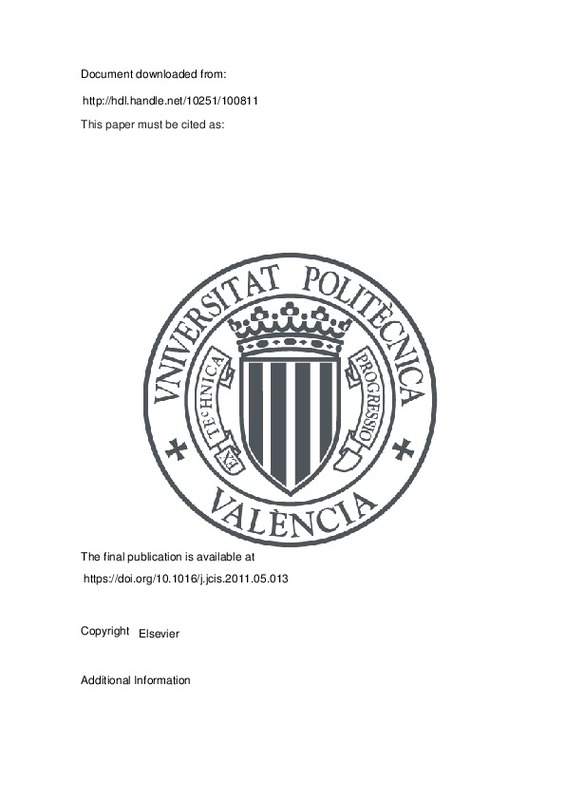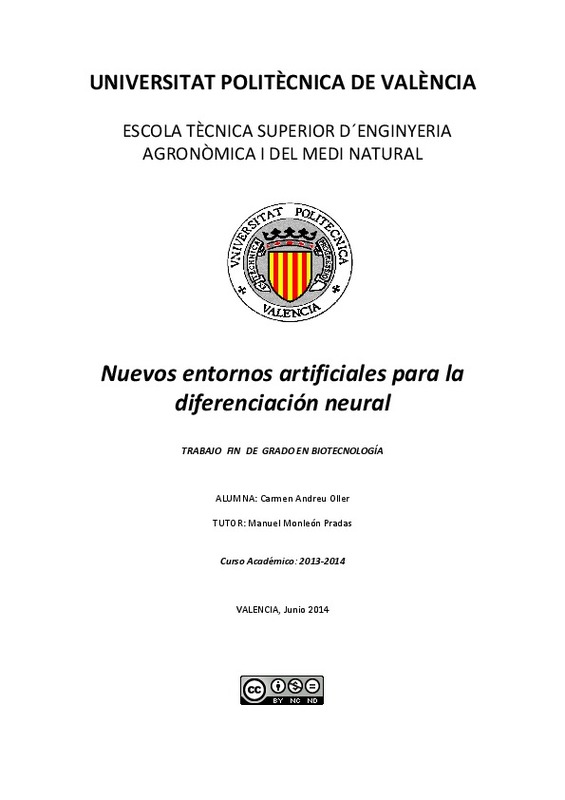Silver, F. H., Wang, M.-C., & Pins, G. D. (1995). Preparation and use of fibrin glue in surgery. Biomaterials, 16(12), 891-903. doi:10.1016/0142-9612(95)93113-r
Mol, A., van Lieshout, M. I., Dam-de Veen, C. G., Neuenschwander, S., Hoerstrup, S. P., Baaijens, F. P. T., & Bouten, C. V. C. (2005). Fibrin as a cell carrier in cardiovascular tissue engineering applications. Biomaterials, 26(16), 3113-3121. doi:10.1016/j.biomaterials.2004.08.007
Eyrich, D., Brandl, F., Appel, B., Wiese, H., Maier, G., Wenzel, M., … Blunk, T. (2007). Long-term stable fibrin gels for cartilage engineering. Biomaterials, 28(1), 55-65. doi:10.1016/j.biomaterials.2006.08.027
[+]
Silver, F. H., Wang, M.-C., & Pins, G. D. (1995). Preparation and use of fibrin glue in surgery. Biomaterials, 16(12), 891-903. doi:10.1016/0142-9612(95)93113-r
Mol, A., van Lieshout, M. I., Dam-de Veen, C. G., Neuenschwander, S., Hoerstrup, S. P., Baaijens, F. P. T., & Bouten, C. V. C. (2005). Fibrin as a cell carrier in cardiovascular tissue engineering applications. Biomaterials, 26(16), 3113-3121. doi:10.1016/j.biomaterials.2004.08.007
Eyrich, D., Brandl, F., Appel, B., Wiese, H., Maier, G., Wenzel, M., … Blunk, T. (2007). Long-term stable fibrin gels for cartilage engineering. Biomaterials, 28(1), 55-65. doi:10.1016/j.biomaterials.2006.08.027
Ho, S. T. B., Cool, S. M., Hui, J. H., & Hutmacher, D. W. (2010). The influence of fibrin based hydrogels on the chondrogenic differentiation of human bone marrow stromal cells. Biomaterials, 31(1), 38-47. doi:10.1016/j.biomaterials.2009.09.021
Breen, A., O’Brien, T., & Pandit, A. (2009). Fibrin as a Delivery System for Therapeutic Drugs and Biomolecules. Tissue Engineering Part B: Reviews, 15(2), 201-214. doi:10.1089/ten.teb.2008.0527
Ahmed, T. A. E., Dare, E. V., & Hincke, M. (2008). Fibrin: A Versatile Scaffold for Tissue Engineering Applications. Tissue Engineering Part B: Reviews, 14(2), 199-215. doi:10.1089/ten.teb.2007.0435
Siebers, M. ., ter Brugge, P. ., Walboomers, X. ., & Jansen, J. . (2005). Integrins as linker proteins between osteoblasts and bone replacing materials. A critical review. Biomaterials, 26(2), 137-146. doi:10.1016/j.biomaterials.2004.02.021
García, A. J. (s. f.). Interfaces to Control Cell-Biomaterial Adhesive Interactions. Advances in Polymer Science, 171-190. doi:10.1007/12_071
Alaminos, M., Sa´nchez-Quevedo, M. D. C., Mun~oz-A´vila, J. I., Serrano, D., Medialdea, S., Carreras, I., & Campos, A. (2006). Construction of a Complete Rabbit Cornea Substitute Using a Fibrin-Agarose Scaffold. Investigative Opthalmology & Visual Science, 47(8), 3311. doi:10.1167/iovs.05-1647
Han, B., Schwab, I. R., Madsen, T. K., & Isseroff, R. R. (2002). A Fibrin-based Bioengineered Ocular Surface With Human Corneal Epithelial Stem Cells. Cornea, 21(5), 505-510. doi:10.1097/00003226-200207000-00013
Willerth, S. M., Arendas, K. J., Gottlieb, D. I., & Sakiyama-Elbert, S. E. (2006). Optimization of fibrin scaffolds for differentiation of murine embryonic stem cells into neural lineage cells. Biomaterials, 27(36), 5990-6003. doi:10.1016/j.biomaterials.2006.07.036
Jockenhoevel, S., Zund, G., Hoerstrup, S. P., Chalabi, K., Sachweh, J. S., Demircan, L., … Turina, M. (2001). Fibrin gel – advantages of a new scaffold in cardiovascular tissue engineering. European Journal of Cardio-Thoracic Surgery, 19(4), 424-430. doi:10.1016/s1010-7940(01)00624-8
Ye, Q., Zünd, G., Benedikt, P., Jockenhoevel, S., Hoerstrup, S. P., Sakyama, S., … Turina, M. (2000). Fibrin gel as a three dimensional matrix in cardiovascular tissue engineering. European Journal of Cardio-Thoracic Surgery, 17(5), 587-591. doi:10.1016/s1010-7940(00)00373-0
Han, C., Zhang, L., Sun, J., Shi, H., Zhou, J., & Gao, C. (2010). Application of collagen-chitosan/fibrin glue asymmetric scaffolds in skin tissue engineering. Journal of Zhejiang University SCIENCE B, 11(7), 524-530. doi:10.1631/jzus.b0900400
Eyrich, D., Wiese, H., Maier, G., Skodacek, D., Appel, B., Sarhan, H., … Blunk, T. (2007). In Vitro and In Vivo Cartilage Engineering Using a Combination of Chondrocyte-Seeded Long-Term Stable Fibrin Gels and Polycaprolactone-Based Polyurethane Scaffolds. Tissue Engineering, 13(9), 2207-2218. doi:10.1089/ten.2006.0358
Karp, J. M., Sarraf, F., Shoichet, M. S., & Davies, J. E. (2004). Fibrin-filled scaffolds for bone-tissue engineering: Anin vivo study. Journal of Biomedical Materials Research, 71A(1), 162-171. doi:10.1002/jbm.a.30147
Osathanon, T., Linnes, M. L., Rajachar, R. M., Ratner, B. D., Somerman, M. J., & Giachelli, C. M. (2008). Microporous nanofibrous fibrin-based scaffolds for bone tissue engineering. Biomaterials, 29(30), 4091-4099. doi:10.1016/j.biomaterials.2008.06.030
Bensaı̈d, W., Triffitt, J. ., Blanchat, C., Oudina, K., Sedel, L., & Petite, H. (2003). A biodegradable fibrin scaffold for mesenchymal stem cell transplantation. Biomaterials, 24(14), 2497-2502. doi:10.1016/s0142-9612(02)00618-x
Weisel, J. W. (2004). The mechanical properties of fibrin for basic scientists and clinicians. Biophysical Chemistry, 112(2-3), 267-276. doi:10.1016/j.bpc.2004.07.029
Ngiam, M., Liao, S., Ong Jun Jie, T., Xiaodi Sui, Yixiang Dong, Ramakrishna, S., & Chan, C. K. (2010). Effects of mechanical stimulation in osteogenic differentiation of bone marrow-derived mesenchymal stem cells on aligned nanofibrous scaffolds. Journal of Bioactive and Compatible Polymers, 26(1), 56-70. doi:10.1177/0883911510393162
Hutmacher, D. W. (2000). Scaffolds in tissue engineering bone and cartilage. Biomaterials, 21(24), 2529-2543. doi:10.1016/s0142-9612(00)00121-6
Babis, G. C., & Soucacos, P. N. (2005). Bone scaffolds: The role of mechanical stability and instrumentation. Injury, 36(4), S38-S44. doi:10.1016/j.injury.2005.10.009
Martinez-Diaz, S., Garcia-Giralt, N., Lebourg, M., Gómez-Tejedor, J.-A., Vila, G., Caceres, E., … Monllau, J. C. (2010). In Vivo Evaluation of 3-Dimensional Polycaprolactone Scaffolds for Cartilage Repair in Rabbits. The American Journal of Sports Medicine, 38(3), 509-519. doi:10.1177/0363546509352448
Richardson, S. M., Curran, J. M., Chen, R., Vaughan-Thomas, A., Hunt, J. A., Freemont, A. J., & Hoyland, J. A. (2006). The differentiation of bone marrow mesenchymal stem cells into chondrocyte-like cells on poly-l-lactic acid (PLLA) scaffolds. Biomaterials, 27(22), 4069-4078. doi:10.1016/j.biomaterials.2006.03.017
Puelacher, W. C., Mooney, D., Langer, R., Upton, J., Vacanti, J. P., & Vacanti, C. A. (1994). Design of nasoseptal cartilage replacements synthesized from biodegradable polymers and chondrocytes. Biomaterials, 15(10), 774-778. doi:10.1016/0142-9612(94)90031-0
Uematsu, K., Hattori, K., Ishimoto, Y., Yamauchi, J., Habata, T., Takakura, Y., … Sato, M. (2005). Cartilage regeneration using mesenchymal stem cells and a three-dimensional poly-lactic-glycolic acid (PLGA) scaffold. Biomaterials, 26(20), 4273-4279. doi:10.1016/j.biomaterials.2004.10.037
Huang, X., Yang, D., Yan, W., Shi, Z., Feng, J., Gao, Y., … Yan, S. (2007). Osteochondral repair using the combination of fibroblast growth factor and amorphous calcium phosphate/poly(l-lactic acid) hybrid materials. Biomaterials, 28(20), 3091-3100. doi:10.1016/j.biomaterials.2007.03.017
Xiong, Z., Yan, Y., Zhang, R., & Sun, L. (2001). Fabrication of porous poly(l-lactic acid) scaffolds for bone tissue engineering via precise extrusion. Scripta Materialia, 45(7), 773-779. doi:10.1016/s1359-6462(01)01094-6
Kang, Y., Yin, G., Yuan, Q., Yao, Y., Huang, Z., Liao, X., … Wang, H. (2008). Preparation of poly(l-lactic acid)/β-tricalcium phosphate scaffold for bone tissue engineering without organic solvent. Materials Letters, 62(12-13), 2029-2032. doi:10.1016/j.matlet.2007.11.014
Obata, A., Hotta, T., Wakita, T., Ota, Y., & Kasuga, T. (2010). Electrospun microfiber meshes of silicon-doped vaterite/poly(lactic acid) hybrid for guided bone regeneration. Acta Biomaterialia, 6(4), 1248-1257. doi:10.1016/j.actbio.2009.11.013
JUNG, Y., KIM, S., KIM, Y., KIM, S., KIM, B., KIM, S., … KIM, S. (2005). A poly(lactic acid)/calcium metaphosphate composite for bone tissue engineering. Biomaterials, 26(32), 6314-6322. doi:10.1016/j.biomaterials.2005.04.007
Park, K., Hyun Jung Jung, Kim, J.-J., & Dong Keun Han. (2010). Effect of Surface-activated PLLA Scaffold on Apatite Formation in Simulated Body Fluid. Journal of Bioactive and Compatible Polymers, 25(1), 27-39. doi:10.1177/0883911509353677
Koenig, A. L., & Grainger, D. W. (2002). Cell-Synthetic Surface Interactions. Methods of Tissue Engineering, 751-770. doi:10.1016/b978-012436636-7/50181-6
Ma, Z., Mao, Z., & Gao, C. (2007). Surface modification and property analysis of biomedical polymers used for tissue engineering. Colloids and Surfaces B: Biointerfaces, 60(2), 137-157. doi:10.1016/j.colsurfb.2007.06.019
Hokugo, A., Takamoto, T., & Tabata, Y. (2006). Preparation of hybrid scaffold from fibrin and biodegradable polymer fiber. Biomaterials, 27(1), 61-67. doi:10.1016/j.biomaterials.2005.05.030
Pankajakshan, D., Krishnan V, K., & Krishnan, L. K. (2007). Vascular tissue generation in response to signaling molecules integrated with a novel poly(ɛ-caprolactone)–fibrin hybrid scaffold. Journal of Tissue Engineering and Regenerative Medicine, 1(5), 389-397. doi:10.1002/term.48
Xiaohong Wang, Shaochun Sui, Yongnian Yan, & Renji Zhang. (2010). Design and Fabrication of PLGA Sandwiched Cell/Fibrin Constructs for Complex Organ Regeneration. Journal of Bioactive and Compatible Polymers, 25(3), 229-240. doi:10.1177/0883911510365661
Zhao, H., Ma, L., Gong, Y., Gao, C., & Shen, J. (2008). A polylactide/fibrin gel composite scaffold for cartilage tissue engineering: fabrication and an in vitro evaluation. Journal of Materials Science: Materials in Medicine, 20(1), 135-143. doi:10.1007/s10856-008-3543-x
Beşkardeş, I. G., & Gümüşderelioğlu, M. (2009). Biomimetic Apatite-coated PCL Scaffolds: Effect of Surface Nanotopography on Cellular Functions. Journal of Bioactive and Compatible Polymers, 24(6), 507-524. doi:10.1177/0883911509349311
Lebourg, M., Antón, J. S., & Ribelles, J. L. G. (2009). Hybrid structure in PCL-HAp scaffold resulting from biomimetic apatite growth. Journal of Materials Science: Materials in Medicine, 21(1), 33-44. doi:10.1007/s10856-009-3838-6
Lowery, J. L., Datta, N., & Rutledge, G. C. (2010). Effect of fiber diameter, pore size and seeding method on growth of human dermal fibroblasts in electrospun poly(ɛ-caprolactone) fibrous mats. Biomaterials, 31(3), 491-504. doi:10.1016/j.biomaterials.2009.09.072
Rahman, M. S., Al-Amri, O. S., & Al-Bulushi, I. M. (2002). Pores and physico-chemical characteristics of dried tuna produced by different methods of drying. Journal of Food Engineering, 53(4), 301-313. doi:10.1016/s0260-8774(01)00169-8
Ho, M.-H., Kuo, P.-Y., Hsieh, H.-J., Hsien, T.-Y., Hou, L.-T., Lai, J.-Y., & Wang, D.-M. (2004). Preparation of porous scaffolds by using freeze-extraction and freeze-gelation methods. Biomaterials, 25(1), 129-138. doi:10.1016/s0142-9612(03)00483-6
Campbell, R. A., Overmyer, K. A., Bagnell, C. R., & Wolberg, A. S. (2008). Cellular Procoagulant Activity Dictates Clot Structure and Stability as a Function of Distance From the Cell Surface. Arteriosclerosis, Thrombosis, and Vascular Biology, 28(12), 2247-2254. doi:10.1161/atvbaha.108.176008
Homminga, G. N., Buma, P., Koot, H. W. J., van der Kraan, P. M., & van den Berg, W. B. (1993). Chondrocyte behavior in fibrin glue in vitro. Acta Orthopaedica Scandinavica, 64(4), 441-445. doi:10.3109/17453679308993663
Makogonenko, E., Tsurupa, G., Ingham, K., & Medved, L. (2002). Interaction of Fibrin(ogen) with Fibronectin: Further Characterization and Localization of the Fibronectin-Binding Site†. Biochemistry, 41(25), 7907-7913. doi:10.1021/bi025770x
González-García, C., Sousa, S. R., Moratal, D., Rico, P., & Salmerón-Sánchez, M. (2010). Effect of nanoscale topography on fibronectin adsorption, focal adhesion size and matrix organisation. Colloids and Surfaces B: Biointerfaces, 77(2), 181-190. doi:10.1016/j.colsurfb.2010.01.021
Filová, E., Brynda, E., Riedel, T., Bačáková, L., Chlupáč, J., Lisá, V., … Dyr, J. E. (2009). Vascular endothelial cells on two-and three-dimensional fibrin assemblies for biomaterial coatings. Journal of Biomedical Materials Research Part A, 90A(1), 55-69. doi:10.1002/jbm.a.32065
[-]






![[Cerrado]](/themes/UPV/images/candado.png)




